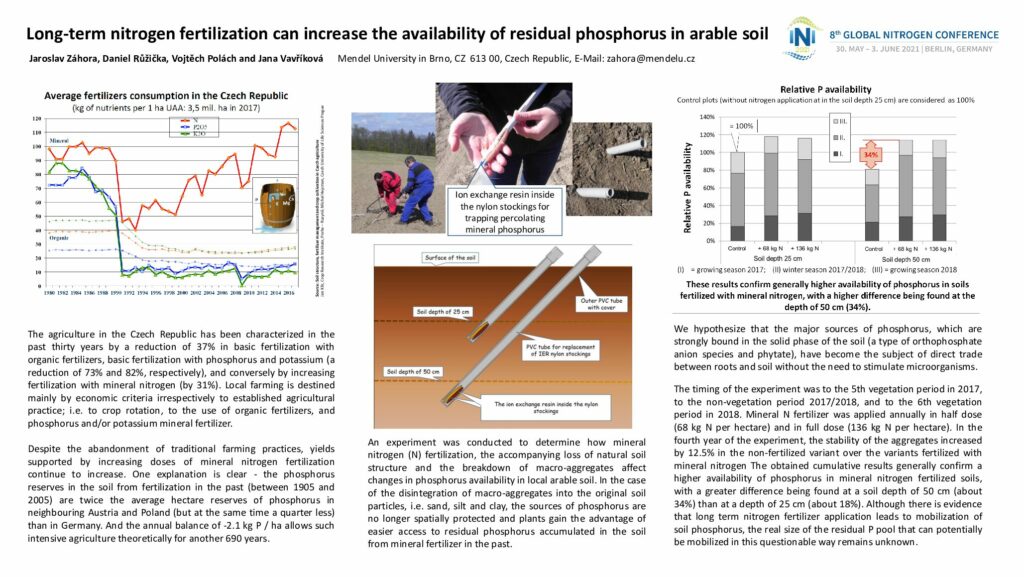Long-term nitrogen fertilization can increase the availability of residual phosphorus in arable soil

The agriculture in the Czech Republic has been characterized in the past thirty years by a reduction of 37% in basic fertilization with organic fertilizers, basic fertilization with phosphorus and potassium (a reduction of 73% and 82%, respectively), and conversely by increasing fertilization with mineral nitrogen (by 31%). Local farming is destined mainly by economic criteria irrespectively to established agricultural practice; i.e. to crop rotation, to the use of organic fertilizers, and phosphorus and/or potassium mineral fertilizer.
Despite the abandonment of traditional farming practices, yields supported by increasing doses of mineral nitrogen fertilization continue to increase. One explanation is clear – the phosphorus reserves in the soil from fertilization in the past (between 1905 and 2005) are twice the average hectare reserves of phosphorus in neighbouring Austria and Poland (but at the same time a quarter less) than in Germany. And the annual balance of -2.1 kg P / ha allows such intensive agriculture theoretically for another 690 years.